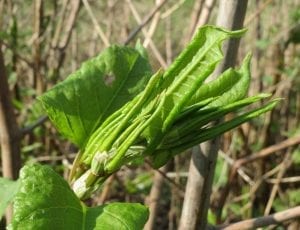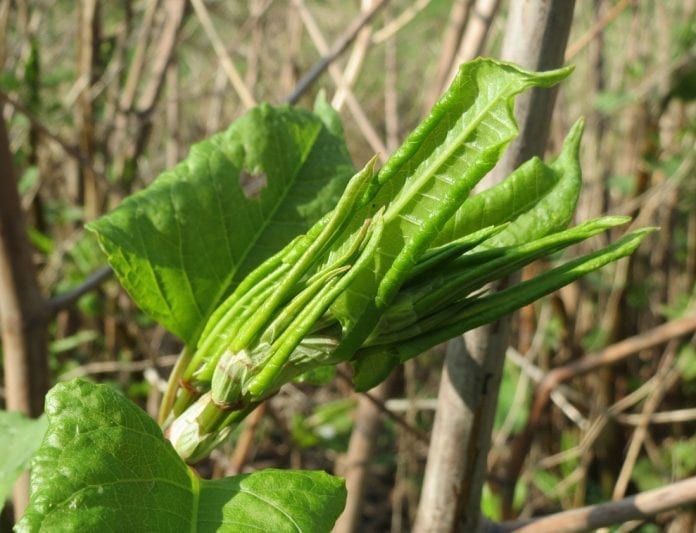Homebuyers beware of winter Japanese knotweed concealment!
Japanese knotweed dies back in autumn, making it easy for sellers to obscure
Homebuyers seeking a property to buy this winter should be extra vigilant for signs of Japanese knotweed, which starts to die back in October and is easily concealed during the winter months. Research by Environet UK and YouGov shows that when it comes to selling a property affected by knotweed, 4% of people surveyed admit they would attempt to conceal it, hoping it isn’t discovered by a buyer or their surveyor.

After the first frost, Japanese knotweed leaves turn yellow and eventually fall, while the bamboo-like canes lose their green appearance and start to turn brown and brittle. This is the start of the winter dormancy period during which the plant appears dead, but in fact the underground root system is very much alive, replenished with new energy reserves from the summer’s growth and ready to strike the following spring.
Homebuyers should be particularly vigilant when viewing properties during the winter months, when property owners can easily take advantage of the plant’s apparent demise in order to deliberately conceal it. Often the canes have been removed but the crown is still visible in the ground, or in extreme cases membranes are laid horizontally in the ground to conceal the knotweed, with a path or lawn laid over it.
In a 2018 YouGov survey of over 2,000 British adults, commissioned by Environet, 4% of respondents stated that if they were selling a property affected by Japanese knotweed, they would attempt to cover it up or otherwise obscure it, hoping it is not discovered by a potential buyer. According to Environet’s data, there could be in the region of 2,400 cases each year of knotweed concealment during UK property transactions.
With the risk of successful concealment of knotweed much higher during the winter months, it’s vital that buyers know what to look out for. Sellers who hide knotweed on their property and answer dishonestly on the Law Society’s TA6 form, which is completed as part of the sale process and asks a direct question about knotweed, are putting themselves at risk of future litigation once the knotweed is discovered.
Nic Seal, Founder and MD of Environet, said,
“People buying property during the winter months are undoubtedly at greater risk from knotweed concealment and should be actively looking for signs of the plant. A surveyor should be able to identify knotweed if it’s visible but they can’t be reasonably expected to dig up the ground, so if a seller has gone to great lengths to hide it by snapping off the dead canes and covering the crowns, it could easily be missed.
“Deliberate concealment of Japanese knotweed is unwise. Dishonest sellers are likely to find themselves being sued for misrepresentation and may have to pay the cost of professional treatment, legal fees and compensate the buyer for any decrease in the property’s value.”
Japanese knotweed doesn’t have to be a deal breaker when it comes to buying and selling property. As long as a professional treatment plan is in place with an insurance-backed guarantee for the work, which can be passed on to the buyer and will satisfy most mortgage lenders, transactions can go ahead unhindered.
Help keep news FREE for our readers
Supporting your local community newspaper/online news outlet is crucial now more than ever. If you believe in independent journalism, then consider making a valuable contribution by making a one-time or monthly donation. We operate in rural areas where providing unbiased news can be challenging. Read More About Supporting The West Wales Chronicle
























